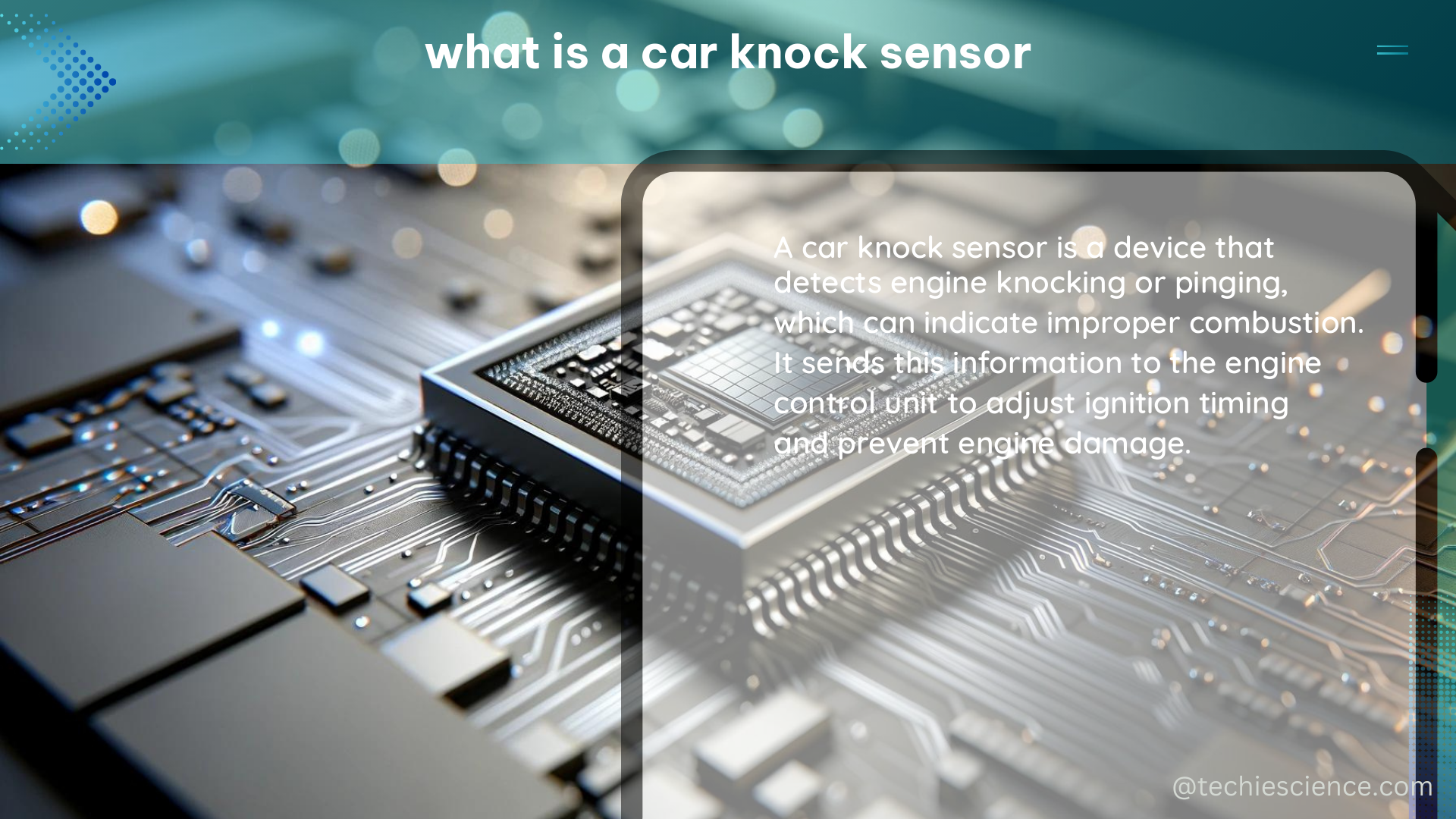A knock sensor, also known as a knock detector, is a crucial component in modern internal combustion engines. It is responsible for detecting engine knock or detonation, which can cause significant damage to the engine if left unchecked. The knock sensor is a piezoelectric sensor that is typically mounted on the engine block or cylinder head, and it is designed to convert the high-frequency vibrations caused by engine knocking into an electrical signal.
Technical Specifications of a Knock Sensor
- Type: Piezoelectric sensor
- Location: Engine block or cylinder head
- Frequency Range: Tuned to pick up on a certain frequency range, typically around the second order knock frequency, which is double the calculated frequency. This tuning helps improve the signal-to-noise ratio and makes it easier to identify the specific frequency of knock.
- Temperature Range: Operates safely and reliably at temperatures up to 160°C (320°F) and can withstand 1,000 cycles of temperature changes.
- Robustness: The knock sensor is designed to be highly robust and resistant to changes in temperature, ensuring reliable operation under various engine conditions.
- Voltage: The voltage of the signal from the knock sensor changes in response to the frequency and amplitude of the vibrations. At idle, the voltage may be around 2 volts, but when the engine is revved, the voltage may only fluctuate slightly.
How a Knock Sensor Works

When the engine is running, the knock sensor is constantly monitoring for any signs of engine knock or detonation. These high-frequency vibrations are caused by the premature ignition of the air-fuel mixture in the engine cylinder, which can lead to a characteristic “knocking” sound.
The knock sensor detects these vibrations and converts them into an electrical signal, which is then sent to the engine control module (ECM). The ECM uses this signal to adjust the ignition timing, reducing the spark advance to prevent further engine knock and protect the engine from potential damage.
Symptoms of a Faulty Knock Sensor
If the knock sensor is not functioning properly, it can lead to a variety of issues, including:
- Reduced engine performance
- Decreased fuel efficiency
- Illumination of the Check Engine Light
- Difficulty starting the engine
In such cases, it is crucial to have the knock sensor properly diagnosed and repaired to prevent further engine damage and ensure optimal engine performance.
DIY Knock Sensor Testing and Replacement
To test a knock sensor, you can use an oscilloscope with a frequency analysis package or a spectrum analyzer. This will allow you to observe the frequency and amplitude of the voltage signal from the sensor. If the sensor is working correctly, you should see a signal that changes in response to engine knock.
If the knock sensor is suspected to be faulty, you can try cleaning it with a brush and solvent to remove any dirt or debris that may be interfering with its operation. If cleaning the sensor does not fix the problem, you may need to replace it.
To replace a knock sensor, follow these steps:
- Locate the knock sensor on the engine block or cylinder head.
- Disconnect the electrical connector from the sensor.
- Unscrew the sensor and remove it from the engine.
- Install the new knock sensor, being careful to tighten it to the specified torque.
- Reconnect the electrical connector.
Remember to always refer to the manufacturer’s instructions and specifications when performing any maintenance or repairs on your vehicle’s knock sensor.
References:
– Supra Forums – Can the Knock Sensor be Triggered by Other Car Noises?
– NASIOC Forums – Understanding Knock Sensors
– Bosch Mobility Solutions – Knock Sensor
– HP Academy – Understanding Knock Sensors
– J.D. Power – What is a Knock Sensor?

The lambdageeks.com Core SME Team is a group of experienced subject matter experts from diverse scientific and technical fields including Physics, Chemistry, Technology,Electronics & Electrical Engineering, Automotive, Mechanical Engineering. Our team collaborates to create high-quality, well-researched articles on a wide range of science and technology topics for the lambdageeks.com website.
All Our Senior SME are having more than 7 Years of experience in the respective fields . They are either Working Industry Professionals or assocaited With different Universities. Refer Our Authors Page to get to know About our Core SMEs.